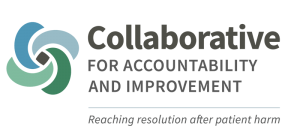Tools and Resources[ Show all or clear results ]
Reporting, analysis and feedback of adverse events including RCA and other analysis methods
Journal Article
Published articles related to CRPWhat can hospitalized patients tell us about adverse events? Learning from patient‐reported incidents.
Published articles related to CRP
The objective of this study is to analyze incident reports from hospital patients to identify adverse medical incidents and near-miss mishaps in their care. Researchers found that most of the adverse events involving patients are not identified. Thus, it is important for hospital systems to partner with patients to efficiently and quickly identify adverse medical events and errors to promote overall healthcare quality and patient safety.
Web resource/Digital Article
General website that contains CRP related information, may be non-specific or general or mixed resources on a website. Article published on-line. Not available as paper version.When It Comes to Liability and Patient Safety What’s Good for Hospitals Can Be Good for Patient
General website that contains CRP related information, may be non-specific or general or mixed resources on a website. Article published on-line. Not available as paper version.
Michelle Mello, the Director of the Program in Law and Public Health at the Harvard School of Public Health, analyzed the effectiveness of communication-and-resolution programs (CRPs) in this article. She found that these models are efficient at addressing healthcare liability issues revolving around adverse medical outcomes. These programs offer a guide for healthcare professionals on how to disclose medical errors to their patients, while also developing ways to prevent future adverse events.
Book/Report
Reference to book or report
When Things Go Wrong: Responding to Adverse Events
Reference to book or report
This consensus paper of the Harvard-affiliated hospitals was prepared by clinicians, risk managers, and patients to provide an in-depth understanding of preventable adverse events, their impact on patients, families, and providers, and how to manage such events. The report provides detailed guidelines based on the premise that all care should be safe and patient-centered and that all actions require full disclosure. In addition to offering recommendations on how to effectively communicate with patients and families, the report discusses support for caregivers and a detailed strategy for institutions to respond to such events in a timely and appropriate fashion. Finally, the comprehensive report offers several appendices that include recommendations and a case study on communicating with patients and families.
